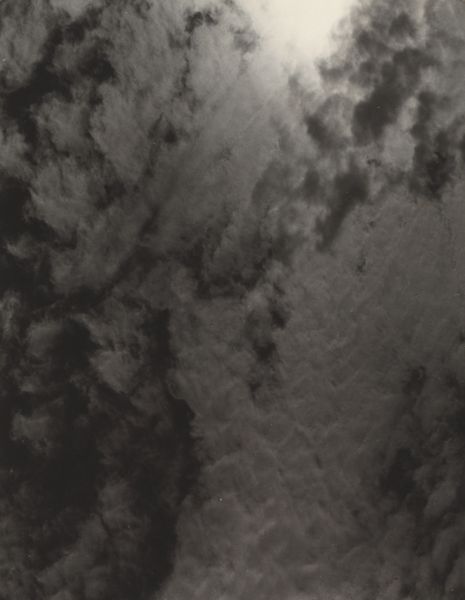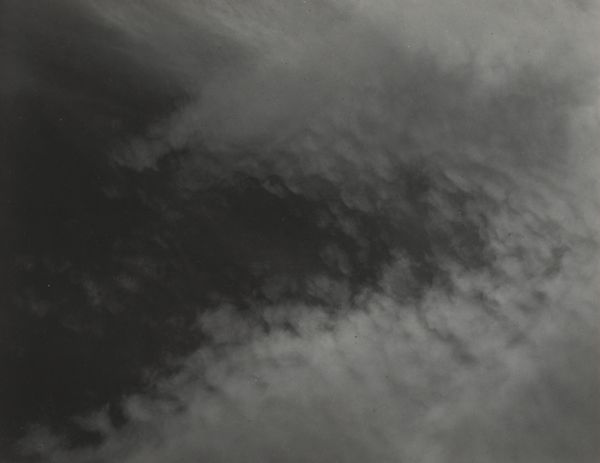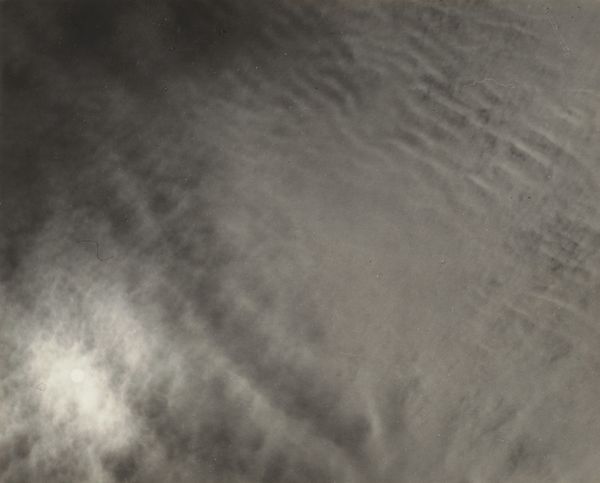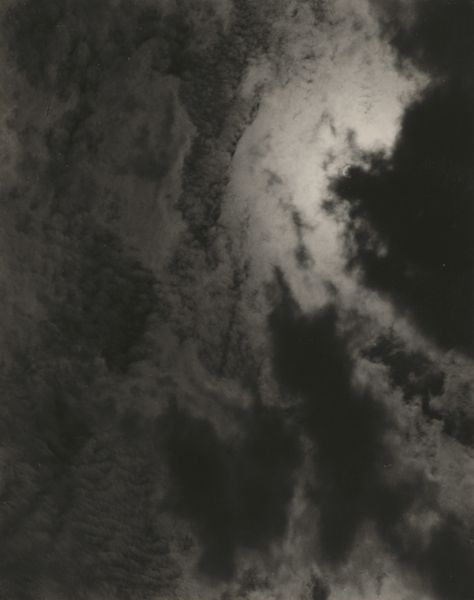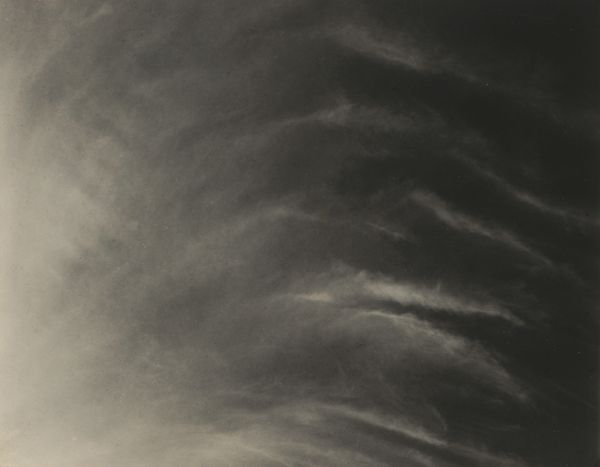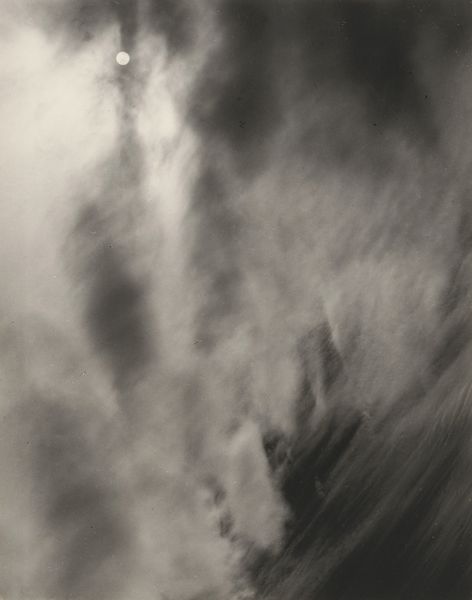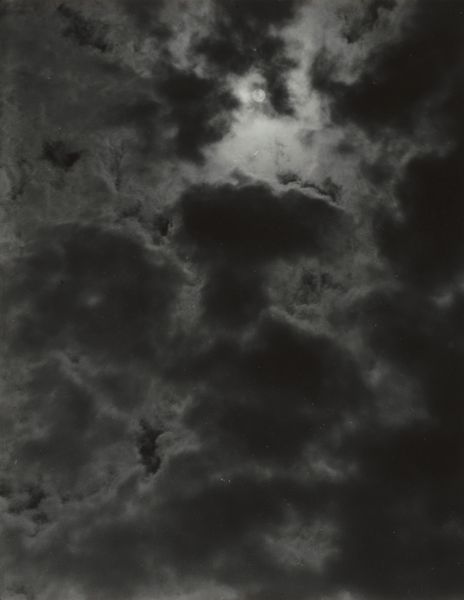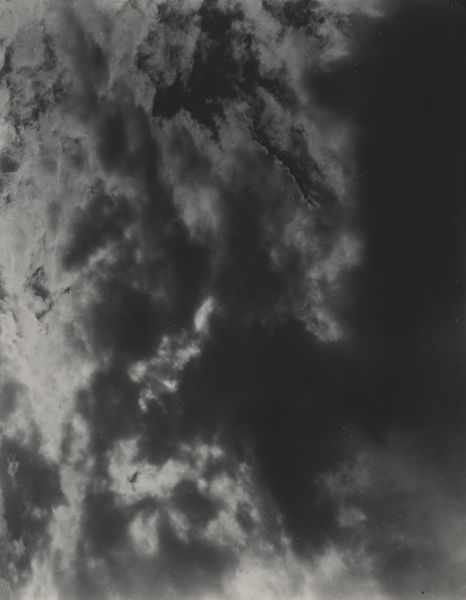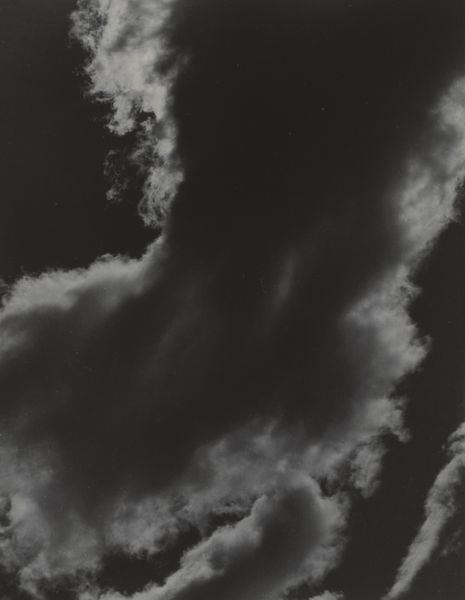
Dimensions: sheet (trimmed to image): 9.3 x 11.8 cm (3 11/16 x 4 5/8 in.) mount: 34.2 x 27.2 cm (13 7/16 x 10 11/16 in.)
Copyright: National Gallery of Art: CC0 1.0
Editor: So, here we have Alfred Stieglitz's "Equivalents" from 1927, a photograph. It’s primarily monochrome, dominated by what seems to be clouds. I find the image incredibly evocative, almost melancholic, like looking at a vast, indifferent sky. What do you see in this piece? Curator: It's more than just a picture of clouds. Stieglitz's "Equivalents" series are powerful statements on the socio-political climate of the 1920s. Post-war, America was grappling with industrialization, shifting social norms, and a sense of disillusionment. These cloud photographs were, in part, Stieglitz's attempt to find a language beyond the representational, an attempt to connect with deeper, more universal emotions. Editor: So, the abstraction reflects the emotional landscape of the time? Curator: Precisely. By photographing clouds, a subject with no inherent social baggage, Stieglitz believed he could convey pure feeling. Think of it in terms of the burgeoning feminist movement as well. Georgia O'Keeffe, Stieglitz's wife, was asserting her independence and artistic voice during this period. Were these cloudscapes, in some ways, also about freeing himself, about letting go of control? What do you think about the visual language, and what connections to landscape paintings could we infer? Editor: I hadn't considered that angle. The way the light plays across the clouds, creating such dramatic contrasts... I see echoes of Romantic landscape painting. Curator: Yes! But Stieglitz takes it a step further. The lack of a clear horizon line disrupts the traditional landscape composition, pushing it towards abstraction. He removes any grounding elements, leaving us suspended in emotion, not unlike the experiences of women in his social circles at that time, but he turns the attention to everyone’s experience and self-reflection. It questions conventional norms, like the rigid societal expectations of the time. Editor: That makes me see it very differently. I’m left thinking about how even seemingly abstract art can be deeply rooted in its context, mirroring societal shifts. Curator: Exactly! Art becomes a conduit for understanding our history, our feelings, and ourselves, with the need to create equity within all structures.
Comments
No comments
Be the first to comment and join the conversation on the ultimate creative platform.
